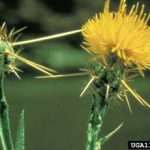“European Bees and “its possible negative impact on native bees.”
- The so-called ‘disagreement’ by entomologists actually leans towards the conclusion that the introduction of ANY introduction of non-native animals and plants have the potential to negatively impact native ecosystems. BEES certainly affect the native biodiversity of public lands when they are introduced.
2. Migratory beekeepers move their hives across the country for pollination and this practice has spread disease parasites and pathogens not just among honey bee colonies, but to wild bees as well.
3. Considering the muck up we have made of our own native habitats both in the flora and fauna in the developed landscape of our cities we need to make sure that Apis mellifera does NOT get trucked into refuges such as our Park systems and other protected sites. IMO these are small and critical refuges for native wildlife that includes the myriad of native bees that certainly are affected by the trucking in of hundreds or thousands of European hives.
4. Yes, they will pollinate the local resources but in so doing they will compete with the native pollinators with devastating consequences on their survival.Then, when removed the original pollinators that the plants had relied on are gone.
Unlike the highly social honeybee (bumblebees being an exception) most native bees are solitary and many pollinate a select number of flowers (generalists vs. anything goes). The honey bee can fly some five miles to search for food, some of these native species fly less than 500 yards from nest to forage. Most live an annual life cycle and are therefore more vulnerable to sudden changes.
By removing the nectar and pollen, this competitive European and African bee will certainly displace native bees, in the case of trucked in European hives – once removed, you remove next year’s pollinator.
The “gateway bug argument is a bogus one (‘suggesting that the previously unaware person into a more engaged one who would notice and protect other similar insects’)
Fewer people now raise bees than they did in the fifties or sixties during the ‘Mother Earth movement or when more rural farms existed. Beekeeping has become like most agro-businesses one that favors the large – the migratory beekeeper who makes his money from pollination, not from honey
In the 50’s we had close to 6 million beehive colonies and this has declined to just over 2.3 million. Add the issue that some of the people who ‘hobby’ this are just plain incompetent and that some of the large ‘competent’ (truck em all over) people consider them as cash cows and replaceable as they die from a disease they help create and spread.
WHO is going to guarantee that these parasites and pathogens will not spread to the native bees? They, unlike the modern hive, cannot simply be requeened!!!!
My greatest argument is that by their borg-like pollination of everything the non-native honey bee pollinates not native and invasive plants such as lantana, ice plant, and Scotch Broom. They further maintain and stabilize the introduced weeds such as European thistles such as yellow star thistle (Centaurea solstitialis), that might otherwise peter out.

(C) Herbert Senft 5/31 1918
Member of the North Olympic Beekeepers’ Association.
Be sure to visit our NOPBA wonderful archive of monthly Newsletters or visit the library that we loan out to our members
